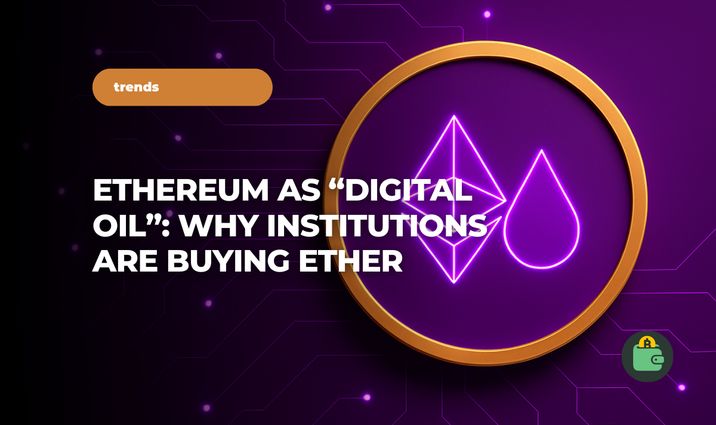Ethereum as “Digital Oil”: Why Institutions Are Buying Ether

For a long time, the crypto world was simple: Bitcoin was “digital gold.” But in recent months, Ethereum has been stepping into the spotlight. More and more often, people call it “digital oil” — the fuel that powers the new blockchain economy.
August and September 2025 were a turning point. With the launch and expansion of ETH ETFs, institutional money started to flow in. In August alone, funds attracted around $4 billion in fresh capital. By contrast, Bitcoin funds saw outflows during the same period. That’s a strong signal: big players are shifting priorities.
Key Takeaways
-
Institutions are piling into ETH. Inflows into Ethereum ETFs hit $4B in August 2025, while Bitcoin funds lost capital.
-
Ethereum is powering real use cases. About 70% of all stablecoins and most DeFi activity run on Ethereum, with transaction volumes already surpassing Visa and Mastercard.
-
ETH supply is tightening. Staking locks up nearly a third of coins, while fee burning creates deflationary pressure.
-
ETH is the “digital oil.” It’s not just an asset like Bitcoin’s “digital gold” — it’s the fuel for decentralized finance and tokenized assets.
Institutional shift
When BlackRock’s ETHA fund pulled in over $600 million in a single day at the end of August, it was clear this wasn’t just short-term speculation. The momentum continued for weeks. Today, ETFs hold about 6.3 million ETH — more than 5% of the total supply.
This shows that ether is no longer just an “alternative for enthusiasts.” It is becoming a core asset in institutional portfolios.
Corporations joining in
It’s not only funds. Companies are also actively adding ETH to their treasuries. Analysts estimate that corporate treasuries now hold around 4.4 million ETH — almost $19 billion. This includes U.S. public companies, crypto startups, and DAOs.
The logic is simple: part of these holdings goes into staking, where they generate a yield of around 4–5% per year. At the same time, ETH remains the essential fuel for transactions and apps.
A living blockchain
Ethereum is not just a token. It’s a whole ecosystem running DeFi, stablecoins, NFTs, and tokenized real-world assets.
In August, the network broke records with more than 1.5 million daily transactions. Stablecoin volumes even surpassed Visa and Mastercard. Nearly 70% of all on-chain dollar tokens live on Ethereum.
This is why ether is compared to oil: it is “burned” in transaction fees, it powers every process, and it is becoming a scarce resource.
Upgrades and scarcity
Recent upgrades make the network more efficient. After EIP-4844, L2 fees dropped several times. New proposals like EIP-7928 promise faster processing through parallel execution.
At the same time, ETH supply is shrinking. Base fees are burned, and during times of high demand, more ETH is destroyed than created. This makes it scarce — and therefore valuable.
Why “digital oil”
Ether plays two roles at once. On one hand, it is an investment asset with limited supply and yield through staking. On the other, it is the fuel that powers decentralized apps and payment systems.
Unlike Bitcoin, which institutions see as “digital gold” and a store of value, Ethereum has become a working asset. It’s not only about price charts, but about its real network function.
Final thoughts
August and September 2025 made one thing clear: capital is moving. Institutions no longer treat ether as a secondary asset. Today it’s in the spotlight, the digital oil fueling the new economy.
And the bigger this economy grows, the stronger the demand for ETH will be.